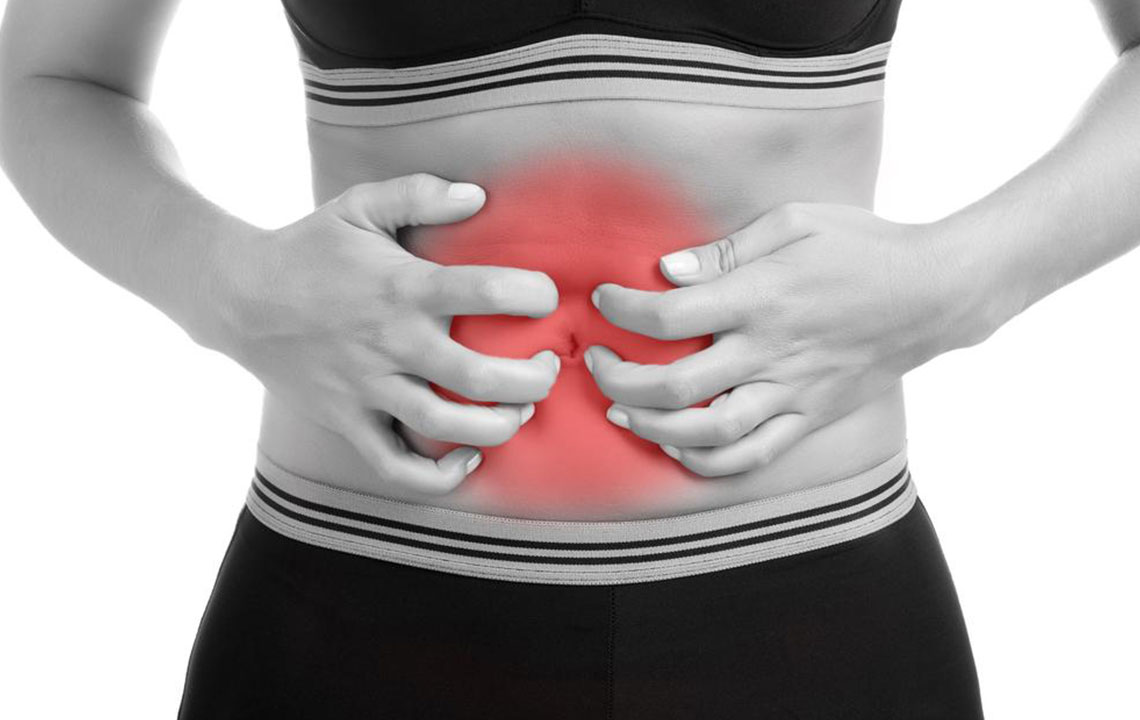Abdominal Pain – Causes, Symptoms, and Treatment

Abdominal pain could happen at any time in one’s life. This leads to immense discomfort. Usually, the pain could be mild and also could lead to nausea, dizziness, etc. Normally people avoid food and water during this time. There are chances that people experience a kind of heaviness in their abdomen this time.
Abdominal pain could happen due to a lot of reasons. When the tissues and organs in the body, which are small intestine, stomach, gallbladder, spleen, liver, pancreas, and colon do not function effectively, there are high chances of abdominal pain. However, it is important to know that at times even with simple medication the pain will be eliminated or it will resolve by itself.
Firstly, when you come across mild abdominal pain, the cause should be identified. In case you overeat the gas-inducing food, there are chances that it will result in distended stomach, heartburn and abdominal pain. When this is the case, the best thing that can be done is to follow some dietary changes. The digestive tract should be healthy in such a case, and hence, it is essential to consume such food substances that are light on the stomach. Consumption of fiber-rich food and increasing the water intake will definitely help for this purpose. Usually, women experience cramps and pain during the monthly period. During this time it is important to stay relaxed as stress could lead to increase in the stomach acid. Doing some breathing exercises will definitely help a lot during the monthly periods.
When you come across abdominal pain due to any reason, the first thing you can do is to change your behavior and lifestyle. If this does not work in your favor, the next thing you can consider is the laxatives, pain relievers or antacids. It is important to keep in mind that certain anti-inflammatory medications like ibuprofen, naproxen and aspirin should not be consumed as this could lead to stomach upset and lead to complications in the gastrointestinal tract. It could also cause ulcers. When you come across any kind of abdominal complication, such pain relievers should be taken that is recommended by the physician or the pharmacist that will not bother your stomach. If you come across continuous abdominal pain and it is severe, there could be further problems like fever, vomiting, diarrhea, jaundice, swelling, belly tenderness or bloody stool. When it results in such complications, it is important to get in touch with a doctor. These indications could be due to internal injury, and hence, with the help of a healthcare provider, you will surely be able to get the desired positive results.
Exercising on a regular basis, consumption of a healthy diet, avoiding smoking and avoiding alcohol will surely reduce the abdominal complications. Good hygiene should be followed, and healthy food has to be consumed. This will help in reducing serious illness.
Causes of abdominal pain
Abdominal pain could be caused due to a variety of reasons. Some of the reasons are organ distention, gallstones, hepatitis, ischemic colitis, indigestion, stomach virus, constipation, food poisoning, gastritis, menstrual cramps, food allergies, irritable bowel syndrome, and ulcers. lactose intolerance, hernia, pelvic inflammatory disease, endometriosis, Crohn’s disease or ulcerative colitis, Appendicitis, Diverticulitis, Gastroesophageal reflux disease, Urinary tract infection, pancreatic cancer, stomach cancer or liver cancer.
Some other causes of abdominal pain include lactose intolerance, hernia, pelvic inflammatory disease, endometriosis, Crohn’s disease or ulcerative colitis, appendicitis, diverticulitis, Gastroesophageal reflux disease, Urinary tract infection, pancreatic cancer, stomach cancer or liver cancer.
Apart from this, some medicines could also result in abdominal pain. Certain dietary supplements could also prove harmful for some people. Hence, it is important to check the label to analyze if the medicine you are consuming has some kind of side effect.
Symptoms of abdominal pain
There are a lot of symptoms associated with abdominal pain. The symptoms could be fever, lack of appetite, belching bloating, tender abdomen, stool complications, indigestion, gastritis, sudden weight loss, nausea, vomiting, chest or pelvic discomfort, gastroesophageal reflux disease, swelling towards the abdomen, etc.
Diagnosis of abdominal pain
The physician is certainly the best person to solve the problem of abdominal pain. They will make sure to conduct physical examination and testing and thereafter conclude the cause and recommend suitable treatment. They also make sure to analyze the mental conditions as well that contribute towards the abdominal pain.
The procedure of diagnosis will typically include physical examination, laboratory tests, X-ray, ultrasound, radiography, Computerized tomography, Magnetic resonance imaging, Capsule endoscopy, Barium X-rays, Endoscopic ultrasound, Colonoscopy, and endoscopy.
Treatment for abdominal pain
The treatment for abdominal pain varied depending on the cause. Concluding on the physical examination and various other tests, the physician normally prescribes pain relievers, antibiotics, prescription medications for GERD, inflammation or ulcers, low-dose antidepressants, antibiotics, surgery for removing the hernia, infected organs or intestinal blocks. They could also recommend changes in the lifestyle.
Depending on the various tests, the physician normally prescribes medicines, and in case there are serious complications, then surgery is recommended, in case it is required.


